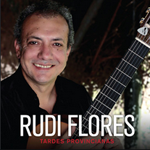This review page is supported in part by the sponsors whose ad banners are displayed below |
 |
 |
|
| Second impressions. To run Zu's Submission subwoofer in <40Hz augmentation mode off the HD DAC whilst the Wave 40 speakers still held court on the SIT1 monos, I decided against 1-to-2 RCA adaptors since I'd needed female XLR to female RCA converters before. Here was good reason to finally add a set to my hifi tool box. I sourced a Diehard pair from Swiss vendor Beck. This converted Nagra's already pseudo XLR to RCA outputs.
After reorganizing the system to run DAC direct, I also relocated the 27-inch music iMac into the fireplace where it fit just so. To make the connection with my 2-meter KingRex double-head USB cable now meant the HD DAC had to move into the right half of the Artesania Audio rack. And that meant a return of my customary 6-meter Zu interconnect to the FirstWatt amps. The loaner rare-earth conductor Arkana Research cable now was too short. The upshot of this bit of housekeeping? My Swiss egg speakers suddenly had more top-end fire. As I'd said in their review, the Arkanas are quite mellow in the treble. |
|
|
|
 |
|
 |
This was a fortuitous showing of remembrance and reminder. With a well-sorted system, everything matters. Wire colourations can be strategically tapped. The silver Zu Event had more snap, crackle and quicksilvery reflexes than the lazier weightier more fulsome Arkana. With this seemingly minor hardware swap, the system had regained the finger-snapping timing I've tuned it for with the Metrum Hex, albeit without undermining the deeper tone colours and peculiar fluidity of the DSD treatment. The gorgeous Kali City album from Belgian guitar/oud maestro Karim Baggili with Le Trio Joubran augmenting the programme's second half had pluck and temporal elegance; speed and curves; metal and wood. I find the balance point between these two polarities hardest to achieve; and harder yet to maintain whilst attempting to load up both its scales for more of each. |
|
|
 |
|
|
|
|
|
| I next exploited my annual Qobuz Hifi subscription. This nets 24/7 FLAC streaming at full 16/44.1 resolution from any computer which runs the French desktop app with proper account credentials. Closing the Qobuz app on my Windows work machine, I opened its Apple version on the iMac and streamed some Arabian chamber music called Songs of Pera. The concept of having some 20'000'000 Redbook-quality tracks at one's finger tips for a paltry €9.99/month, then up-conditioning them to 5.6MHz DSD128 is quite the hi-tech marvel. Of course not everything which the UK's Songlines magazine dedicated to world music reviews can be found there. Still, I did hit on some Çiğdem Aslan I'd not heard before. To preview other stuff I'd just read about in the latest issue required Spotify+. |
|
|
|
 |
|
 |
One of those artists was Argentinean guitar virtuoso Rudi Flores with Tardes Provincianas. Though unrepentant hifi snobs shun even Spotify's best-quality stream as beneath them, my music consumption includes fine dining and junk food. When the question is one of nada or MP3 at 320mbps, I'll opt for the latter any day. Whilst the HD DAC didn't brush over the audible fact that these files had been strip-mined, it made them sound fuller than my desk-top system's Sabre DAC. It's why Peachtree specify their defeatable tube buffer in all their kit. Though the HD DAC is unapologetically luxurious to ooze proper snob appeal, its virtues aren't restricted to designer music. They become just as meaningful with low-rent stuff, lesser production values and lossy compression. |
|
|
 |
Be it Amanda Martinez's mellow TexMex , Kinan Azmeh's slinky clarinet on Elastic City, the catchy crossover Flamenco of Jerez Texas or the harp/kora duetizing of Catrin Finch and Seckou Keita, Nagra's conversion enhancements did a good job of hiding their MP3 delivery. Call it natural or benign resolution, not antiseptic relentlessness.
|
 |
Time to discuss
the MPS power supply. It's a quite sophisticated power management system whose in-house wound toroid sports discrete secondaries for each 'zone'.
|
 |
It can be set to completely float its battery; or keep it connected for continued charging. In the former mode, recharge kicks in automatically once power falls below the specified figure. This is visually confirmed with a blinking yellow LED in the BAT position. If you wish to commit your HD DAC settings to memory, power it off before you turn off the MPS.
|
 |
The MPS even has a discrete output for Nagra's tiny BPS phono stage. Nagra feel that the battery feed makes the most profound contribution to their full-size phono stage. The Jazz preamp is said to sound virtually identical from its stock supply. If you only own the preamp, don't bother with the MPS. It's once you run multiple Nagra components that centralizing their power delivery to eliminate multiple outlet-hogging small supplies makes sense.
|
|
|
Would the HD DAC's performance differ at all when driven from its two stock supplies vs. the MPS?
|
 |
|
 |
  |
 |